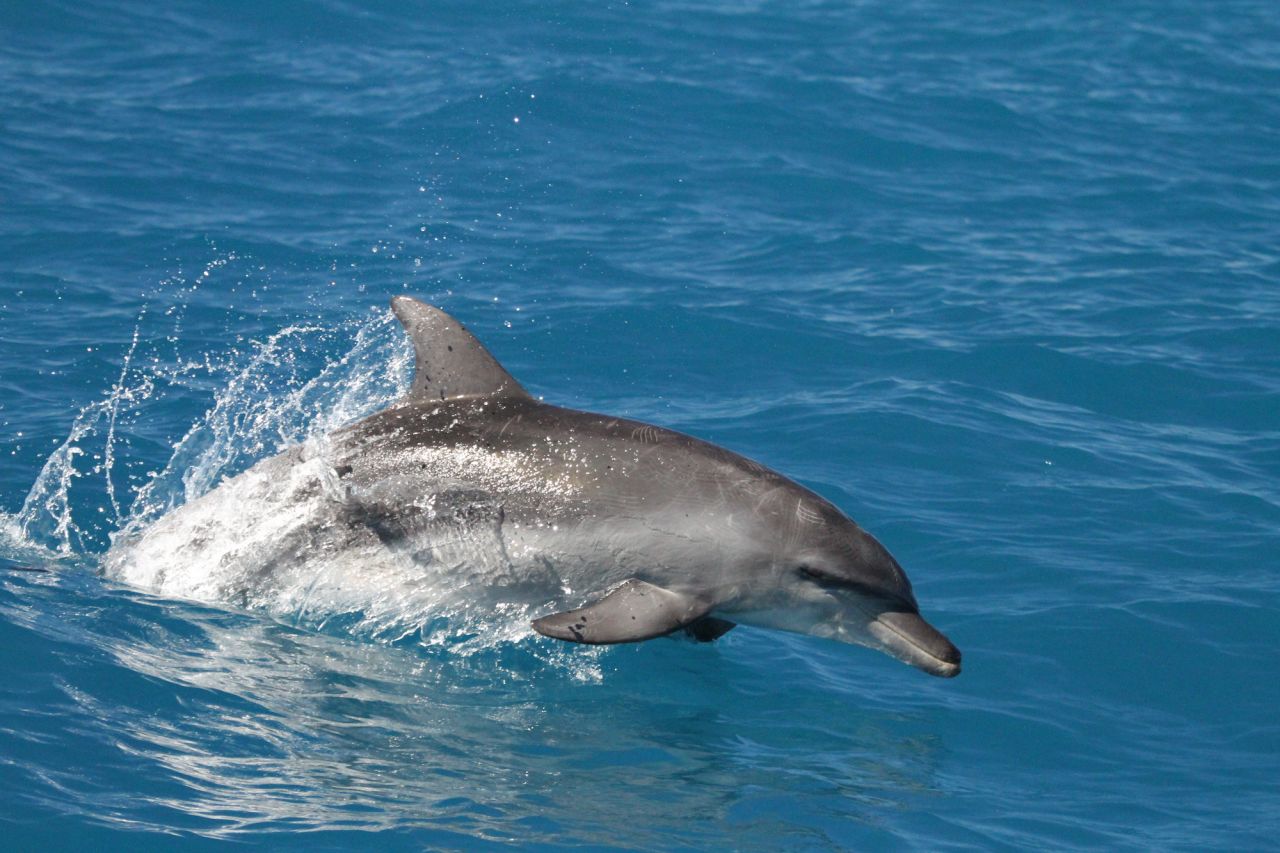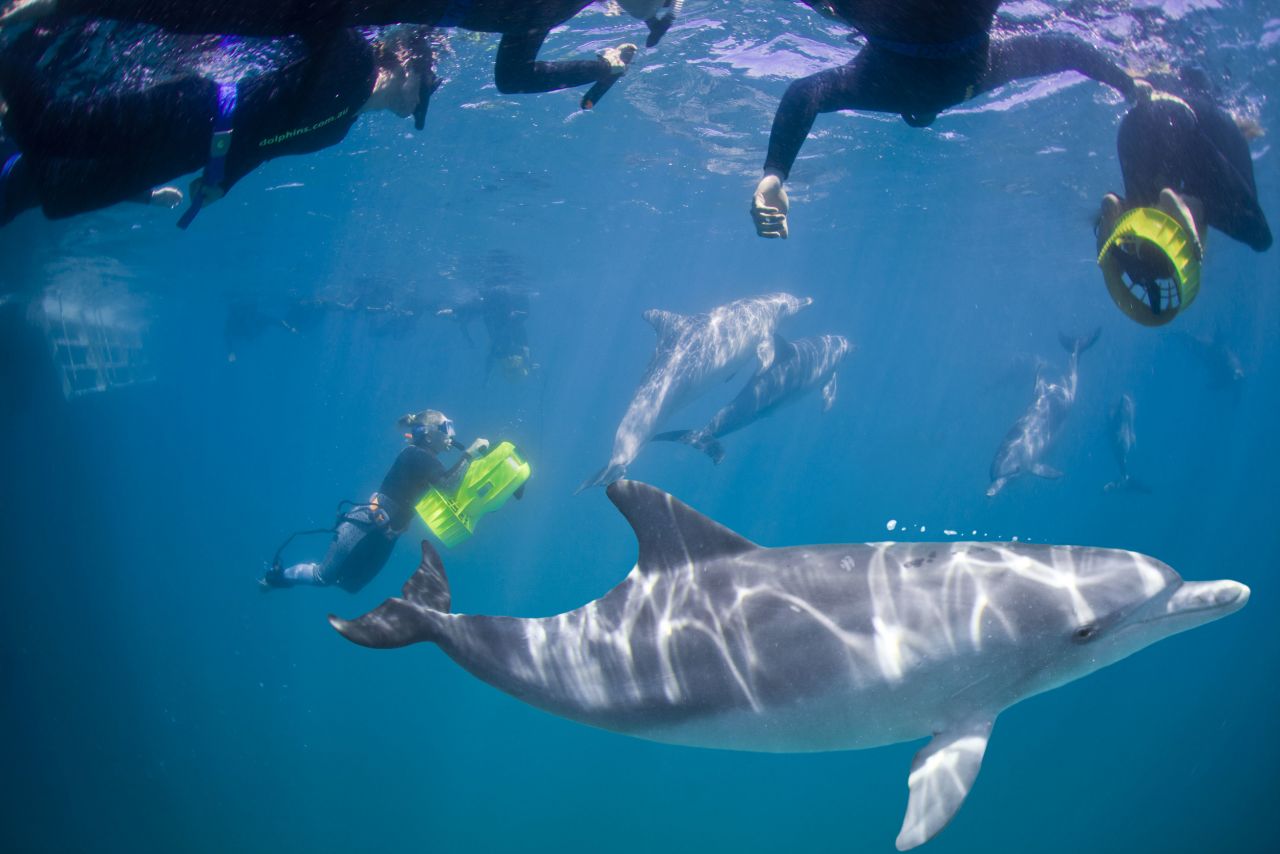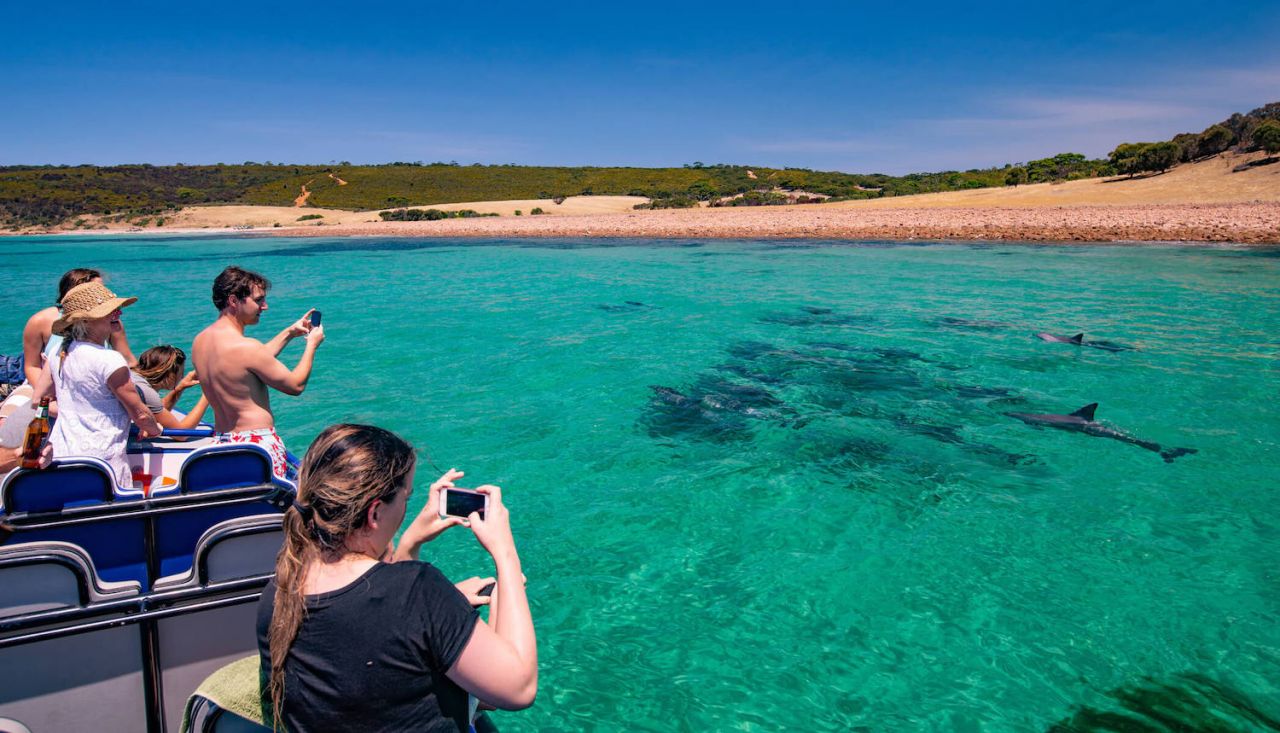Gliding effortlessly through coastal waters, the Bottlenose Dolphin (Tursiops spp.) is one of Australia's most familiar and beloved marine mammals. Known for their intelligence, sociability, and playful behaviour, these sleek marine mammals are a common sight along Australia's coasts, especially in bays, estuaries, and sheltered reefs. Bottlenose Dolphins are among the most studied and recognisable cetaceans, and for good reason: they are both ecologically important and endlessly fascinating.
Australia is home to two recognised species: the Common Bottlenose Dolphin (Tursiops truncatus), which is found worldwide in temperate and tropical waters, and the Indo-Pacific Bottlenose Dolphin (Tursiops aduncus), which prefers shallower, warmer waters and is more prevalent along the Australian coastline, especially around the Great Southern Reef.
Ecological Importance
Bottlenose Dolphins play a vital role in marine ecosystems as top-level predators, helping regulate fish populations and maintain healthy food webs. Their presence is also an indicator of ocean health — regions with thriving dolphin populations typically have robust marine biodiversity.
Size and appearance
Bottlenose Dolphins are medium-sized cetaceans, typically measuring between 2 and 3.9 metres in length and weighing 150–650 kg, depending on species and sex. They have streamlined, fusiform bodies designed for speed and agility in the water, with a short beak-like snout (the "bottle" that gives them their name), a prominent dorsal fin, and strong, curved flippers.
Their skin is smooth and rubbery, generally grey to slate-blue on top and lighter on the belly, creating a countershading effect that helps camouflage them from both predators and prey.
Diet
Bottlenose Dolphins are opportunistic carnivores, preying primarily on fish, squid, and other cephalopods. They employ a variety of sophisticated hunting techniques - including herding, fish-whacking with their tails, and cooperative hunting in small pods. In some areas, dolphins have even been observed using marine sponges as tools to protect their snouts while foraging on the seafloor - a remarkable example of learned behaviour.
They typically consume 8-15 kg of food per day, depending on activity levels and prey availability.

Indo-Pacific Bottlenose Dolphin in Hervey Bay. Image: Pacific Whale Foundation Eco-Adventures Australia.
Breeding
Bottlenose Dolphins have a slow reproductive rate, with females typically giving birth every 3–6 years after a 12-month gestation. Calves are born tail-first and can swim within minutes. Mothers nurse their young for up to 18 months, though the maternal bond may last much longer.
Dolphins live in complex social groups, often structured around matrilineal lines. These bonds play an important role in calf rearing, social learning, and cooperative defence. Lifespans average 20-40 years, though some individuals can live beyond 50 years in the wild.

Swimming with Bottlenose Dolphins in Perth. Image: Perth Wildlife Encounters.
Conservation
While Bottlenose Dolphins are not currently considered endangered globally, some populations are under pressure, especially those that live close to heavily developed coastlines. Key threats include:
Major threats include:
- Entanglement in fishing gear, especially gillnets and crab pots
- Boat strikes, particularly in busy harbours and marinas
- Pollution, including heavy metals and microplastics, which accumulate in tissue
- Habitat degradation, especially the loss of healthy seagrass and estuarine systems
- Noise pollution from vessels and sonar, which disrupts communication and echolocation
In Australia, both species are protected under the Environment Protection and Biodiversity Conservation (EPBC) Act, with regional protections also in place. Conservation efforts focus on reducing bycatch, improving water quality, and regulating tourism interactions.

Bottlenose Dolphins on Kangaroo Island. Image: Exceptional Kangaroo Island.
Where to see Bottlenose Dolphins in the wild
Bottlenose Dolphins can be seen year-round in coastal waters across Australia.
The following experiences include dedicated dolphin encounters:
Perth, Western Australia
Suggested Perth tours:
- Swim with Wild Dolphins (4-6 hours) - Perth Wildlife Encounters
- 3 Islands Wildlife Snorkel (4 hours) - Perth Wildlife Encounters
- Dolphin, Sea Lion & Penguin Island Cruise (2 hours) - Perth Wildlife Encounters
Kangaroo Island, South Australia
Suggested Kangaroo Island tours:
- Kangaroo Island Wildlife Photography Tour (3 days) - Exceptional Kangaroo Island
- Conservation Connection (3 days) - Exceptional Kangaroo Island
Hervey Bay, Queensland
Suggested Hervey Bay tours:
- Hervey Bay Nature Cruise (2 hours) - Pacific Whale Foundation Eco-Adventures Australia
- Ultimate Hervey Bay Whale Watching (3 hours) - Pacific Whale Foundation Eco-Adventures Australia
Eyre Peninsula, South Australia
Suggested Eyre Peninsula tours:
- Eyre Peninsula Wildlife & Ocean Encounters (3 days) - Australian Coastal Safaris
In addition to the above experiences, other experiences available include opportunistic dolphin encounters:
East Gippsland, Victoria
Suggested East Gippsland tours:
- East Gippsland Wildlife Journey (4 days) - Echidna Walkabout Nature Tours
Maria Island, Tasmania
Suggested Maria Island tours:
- The Maria Island Walk (4 days) - The Maria Island Walk
- Maria Island Winter Escape Walk (3 days) - The Maria Island Walk
Wineglass Bay, Tasmania
Suggested Wineglass Bay tours:
- Tasmanian Wildlife Encounter (5 days) - Premier Travel Tasmania
- Western Wilderness & Wildlife Encounter (9 days) - Premier Travel Tasmania
Ningaloo Reef, Western Australia
Suggested Ningaloo Reef tours:
- Deluxe Whaleshark Swim (1 day) - Exmouth Dive & Whalesharks Ningaloo
- Deluxe Mega Fauna Swim (1 day) - Exmouth Dive & Whalesharks Ningaloo
- Outer Reef or Islands Scuba Dive & Snorkel (1 day) - Exmouth Dive & Whalesharks Ningaloo
Margaret River, Western Australia
Suggested Margaret River tours:
- Augusta Whale Watching (2.5 hours) - Naturaliste Charters
- Dunsborough Whale Watching (2.5 hours) - Naturaliste Charters
FAQs
Are Bottlenose Dolphins the same everywhere?
Not quite. The Common Bottlenose Dolphin is found in many parts of the world, but Australia also hosts the Indo-Pacific Bottlenose Dolphin, which has some physical and behavioural differences.
Can dolphins really use tools?
Yes! Dolphins have been observed using marine sponges to protect their rostrums while digging for prey on the seafloor — a rare example of tool use in the animal kingdom.
Do they really "talk" to each other?
Dolphins communicate using a mix of clicks, whistles, and body movements. Each dolphin has a unique "signature whistle," much like a name.
Are dolphins friendly to humans?
Wild dolphins are curious and social, but should always be respected. Approaching or feeding wild dolphins is illegal in many states, as it can change their natural behaviour.
How smart are dolphins?
Extremely. They demonstrate problem-solving, self-recognition, empathy, and cultural learning, placing them among the most intelligent non-human animals.

